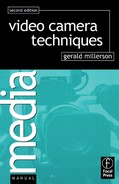There is nothing more frustrating, time-wasting, and costly, than unreliable equipment that lets you down at a crucial moment. These camera care reminders can help you to avoid that happening.
During a busy day, it’s easy to become a little careless in the way you handle your camera. A ‘lightweight’ shoulder-mounted camera can feel heavier by the minute after a long session, and it is a relief to put it down.
Remember though, your camera is really a delicate instrument. It doesn’t like dirt, sand, sea-water, rain, moisture, hot sun, steam, mist, heat, extreme cold… The lens easily becomes coated with dust or condensation. Grit gets into tender parts, and can scratch as it is removed. It takes just a moment to protect your camera with a waterproof cover (‘rain hood’). A brief oversight as a camera is rested on the ground, a spilt drink, the jolts and vibrations of a traveling vehicle can lay up endless trouble. A car’s trunk can become an oven in hot weather. High humidity can wreak havok with videorecorders.
In short, it’s a good general principle to fit your camera into a suitably protective container when you are not using it, or attach it to a firmly-based tripod. Care today, repays you with equipment reliability tomorrow.
When you disconnect or disassemble the camera, fix protective caps (or plastic bags) over cable connections, to prevent damage, damp or contamination. As you wind up the cable, take care to avoid twists and sharp bends. Dragging it over the ground can put quite a strain on it. A lot of ‘don’ts’ there, but bear in mind that any damage to the cable may not be obvious until you discover it the hard way – in use!
Batteries too are often taken for granted. Make sure that you have all batteries checked and recharged after use. Don’t leave them around in a half-charged condition. It shortens their life, and the running-time left in them is uncertain when you come to use them next time.
Batteries need to be charged correctly. NiCad cells can develop a ‘memory’ condition (depressed voltage) if you give them a long ‘trickle charge’, or over-charge and then leave them around partially discharged. If you use a battery for short periods (e.g. half an hour) and then recharge it fully, its voltage will appear maximum at first, but fall off after about half an hour, never delivering its full capacity. It is best to use a cell discharger, which drains the battery to a low voltage before recharging.
In cold weather, keep batteries warm in your pockets under clothing. To protect the camera light, allow a freshly charged cell time to stabilize before using, for its initial voltage will be high, and it could ‘blow’ the lamp.
Human nature being what it is, routine checks become tiresome – but in the end they pay off. After switching off the camera at the end of a session, make it a regular habit to check out the following details:
• PANNING HEAD – Lock off and secure the pan/tilt movements. (Some heads have a securing chain.) Do not tighten drag controls. Has the head been operating smoothly? (Regular cleaning and lubrication is needed.) If weighty accessories (e.g. prompter, matte box) have been removed, check that the camera-head is not left ‘back-heavy’.
• PEDESTAL / TRIPOD COLUMN – Lock off the vertical column movement. If a prompter has been removed, the column will now be wrongly balanced (harder to lower). It will need re-balancing if the mounting is used without one next time.
• LENS – Before attaching the lens cover, look across the lens surface against the light, Is it clean of dust and finger marks? Lenses have a very thin surface-coating (blooming) which reduces internal reflections, and improves picture contrast. This is easily scratched or worn, so never touch the lens surface. Use a special lens brush to dust it, or a can of compressed air. Only when these are ineffective, use lens tissues or lens-cleaning liquid.
• CAMERA HEAD – Is the camera head clean? Dust and grime soon build up. Have you had any mechanical or electronic trouble that now needs attention? Did the various controls operate correctly? (Focus, zoom, shot box, indicators.) Is the viewfinder OK? (Sharpness, brightness, linearity, mixed feeds, etc.) Is the intercom working properly? (Communal and private wires.)
• CAMERA MOUNTING – Have there been any problems? (Steering, elevation, motor controls, etc.) Check over the dolly’s general cleanliness, including tire surfaces. (Odd remnants of plastic tape etc., get picked up, and can cause bumpy dollying; any oil/grease can cause tire-slip.) Check cable guards to ensure that they are not loose, too high or too low. Wheel brakes OK?
• CABLE – Having made sure that the equipment is switched off, remove the camera cable. Check that its ends are protected (capped) and store it neatly ready for next time. Typical methods include a figure-of-eight pile on a canvas carrying sheet, or a cable drum. Finally, place dust covers over the equipment.
• STORAGE AREA – Many studios simply leave cameras grouped on the studio floor at the end of the working day. If however, scenery has to be moved in and out of the studio, it is safer to have a nearby equipment storage room, away from the general traffic.
